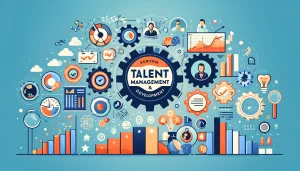A Catering Management System is a software solution designed to streamline and automate the processes involved in managing catering services for events, functions, or food service establishments. Here are the key components and functionalities typically found in a catering management system:
Event Management:
Create and manage events, bookings, and reservations for catering services.
Schedule events, assign staff, and allocate resources such as equipment, facilities, and transportation.
Track event details, including date, time, location, guest count, menu preferences, dietary restrictions, and special requests.
Menu Planning and Customization:
Design and customize menus based on client preferences, dietary requirements, and event themes.
Create menu templates and packages for different types of events, cuisines, and occasions.
Offer flexibility to modify menus, add or remove items, and accommodate special requests from clients.
Inventory Management:
Manage inventory levels of food ingredients, beverages, supplies, and equipment.
Track stock levels, reorder points, and expiration dates to prevent stockouts and minimize wastage.
Generate purchase orders, receive deliveries, and update inventory records in real-time.
Order Management:
Receive and process catering orders, including menu selections, quantities, and delivery/pick-up details.
Confirm order details with clients, send order confirmations, and update order status throughout the fulfillment process.
Handle changes, cancellations, and last-minute requests from clients efficiently.
Staff Scheduling and Management:
Schedule and assign staff members (chefs, cooks, servers, bartenders) to events based on availability, skills, and workload.
Track staff attendance, hours worked, and overtime.
Manage staff roles, responsibilities, and training requirements.
Billing and Invoicing:
Generate invoices, quotes, and estimates for catering services.
Calculate pricing based on menu items, quantities, service fees, and additional charges (e.g., equipment rental, staffing).
Process payments, track payment status, and send payment reminders to clients as needed.
Client Relationship Management (CRM):
Maintain a database of clients, contacts, and leads.
Capture client preferences, event histories, and communication logs.
Send personalized communications, follow-up emails, and promotional offers to clients.
Reporting and Analytics:
Generate reports and analytics on sales performance, revenue, expenses, profitability, and client satisfaction.
Monitor key performance indicators (KPIs) such as average order value, booking conversion rate, and customer retention rate.
Gain insights into popular menu items, seasonal trends, and customer preferences to inform menu planning and marketing strategies.
Integration and Accessibility:
Integrate with other systems and platforms, such as accounting software, CRM systems, and online booking platforms.
Provide accessibility through web-based portals, mobile apps, or POS (Point of Sale) terminals for staff and clients to place orders, manage bookings, and access information remotely.
Compliance and Security:
Ensure compliance with food safety regulations, health codes, and licensing requirements.
Implement security measures to protect sensitive customer data, payment information, and business operations from unauthorized access and data breaches.





